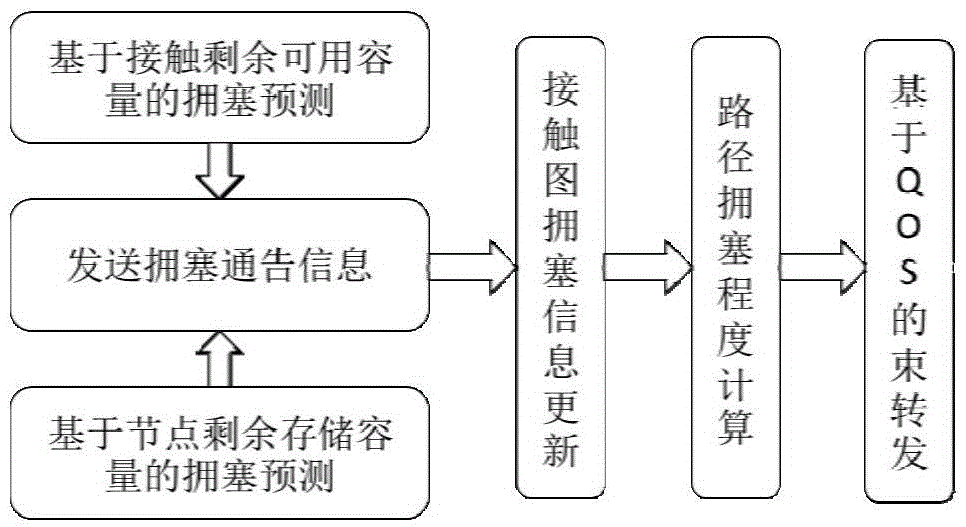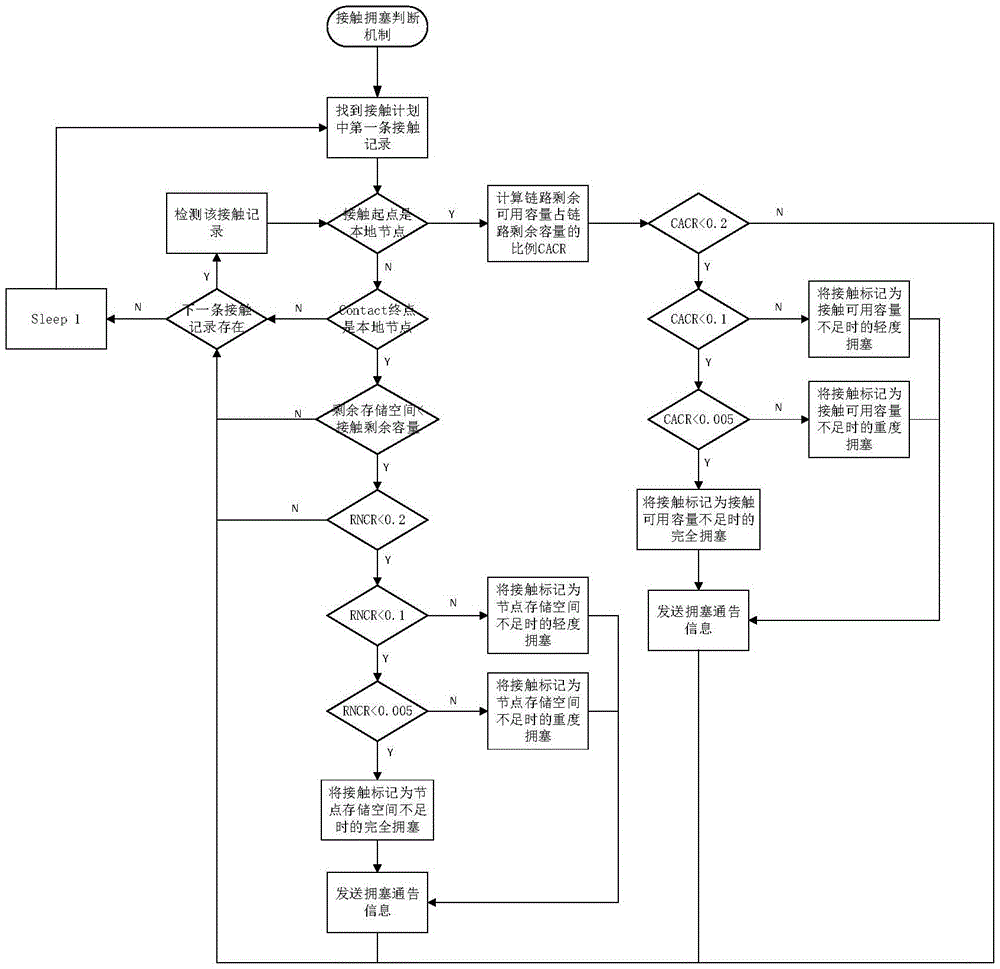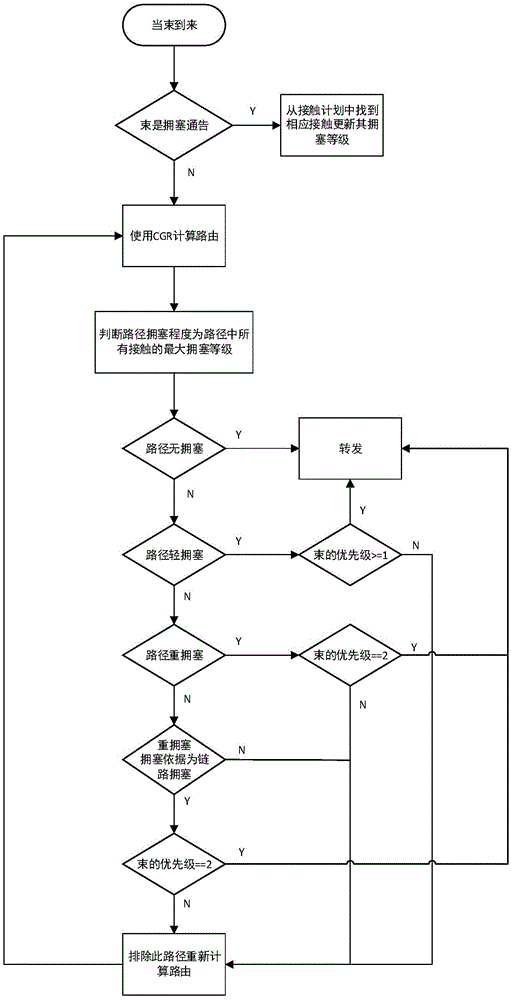Space delay tolerant network congestion control method based on QoS
A delay-tolerant network and congestion control technology, applied in the field of computer networks, can solve problems such as path congestion, network congestion, and failure to consider remaining capacity, and achieve the effect of reducing delivery delay and improving delivery rate.
- Summary
- Abstract
- Description
- Claims
- Application Information
AI Technical Summary
Problems solved by technology
Method used
Image
Examples
Embodiment Construction
[0071] In order to illustrate the present invention more clearly, the present invention will be further described below in conjunction with preferred embodiments and accompanying drawings. Similar parts in the figures are denoted by the same reference numerals. Those skilled in the art should understand that the content specifically described below is illustrative rather than restrictive, and should not limit the protection scope of the present invention.
[0072] The QoS-based space delay tolerant network congestion control method provided in this embodiment establishes and uses two mechanisms of congestion level judgment and QoS-based routing and forwarding, and divides contacts into non-congested and light according to the remaining available capacity of the contact and the remaining storage space of the node. There are four different congestion levels: moderate congestion, severe congestion, and complete congestion. When calculating bundle routing, the congestion level of ...
PUM
 Login to View More
Login to View More Abstract
Description
Claims
Application Information
 Login to View More
Login to View More - R&D
- Intellectual Property
- Life Sciences
- Materials
- Tech Scout
- Unparalleled Data Quality
- Higher Quality Content
- 60% Fewer Hallucinations
Browse by: Latest US Patents, China's latest patents, Technical Efficacy Thesaurus, Application Domain, Technology Topic, Popular Technical Reports.
© 2025 PatSnap. All rights reserved.Legal|Privacy policy|Modern Slavery Act Transparency Statement|Sitemap|About US| Contact US: help@patsnap.com



